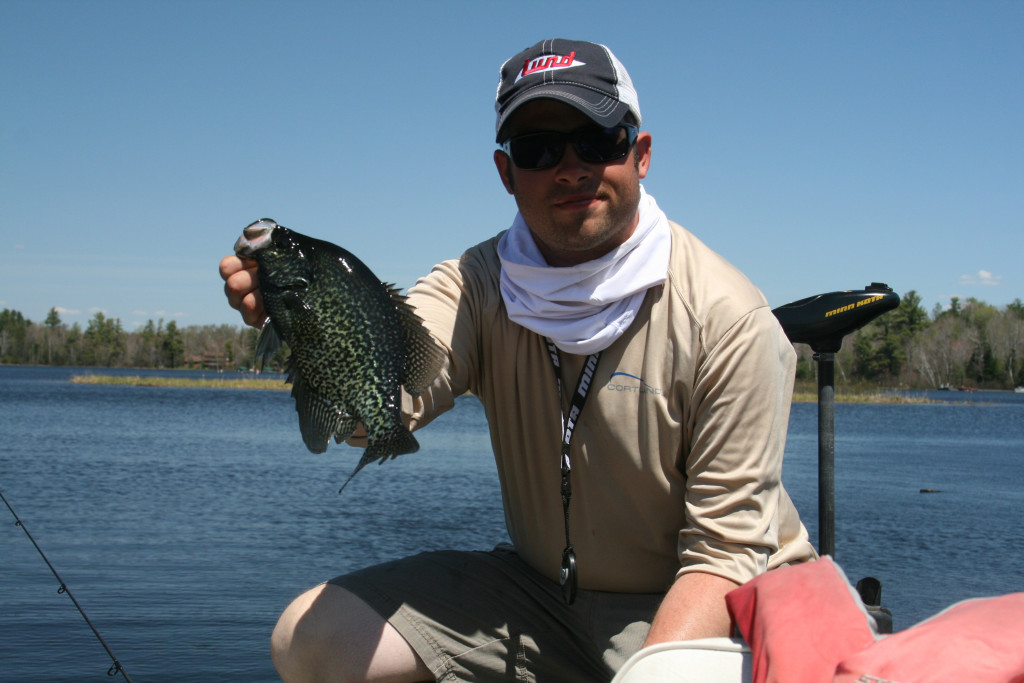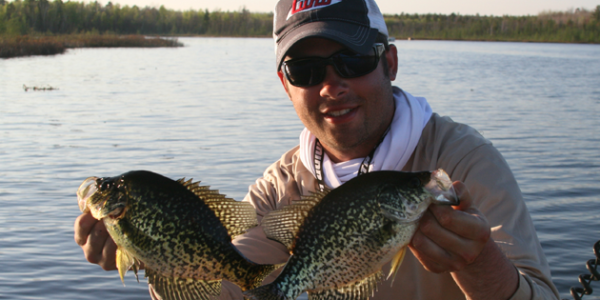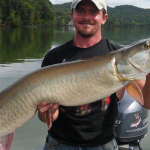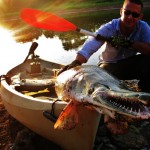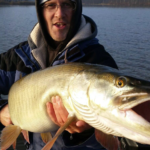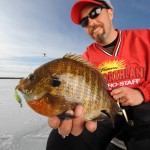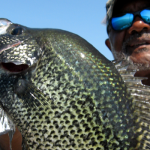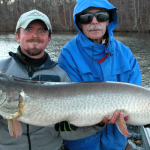By Andrew Ragas
Spring time is crappie time, and for me the first prolonged warm spell in May signifies the arrival of the crappies in shallow water. Schools of spawning crappies will migrate from main lake areas, seeking the thickest, most luscious shallow water cover to lay eggs in protection. Wood cover, weed beds, and bulrushes are popular spawning grounds, and the most sought-after accessible fishing locations for anglers. While these community spots are always good areas to focus on, nobody is going into shallowest jungles where boat access is difficult.
During the last few springs on some of my favorite lakes, I’ve made some strange discoveries and observations while bass fishing. Pitching and flipping through the emerging thick cover for largemouth bass this time of year, I’ve often found that the most inaccessible bogs and root systems of lily pads contain the most favorable and unsuspecting schools of spawning crappies. These spots are often loaded with fish, and nobody is locating them. I can only speculate that most folks don’t have the required shallow drafting hulls, and powerful trolling motors to reach them in these locations.
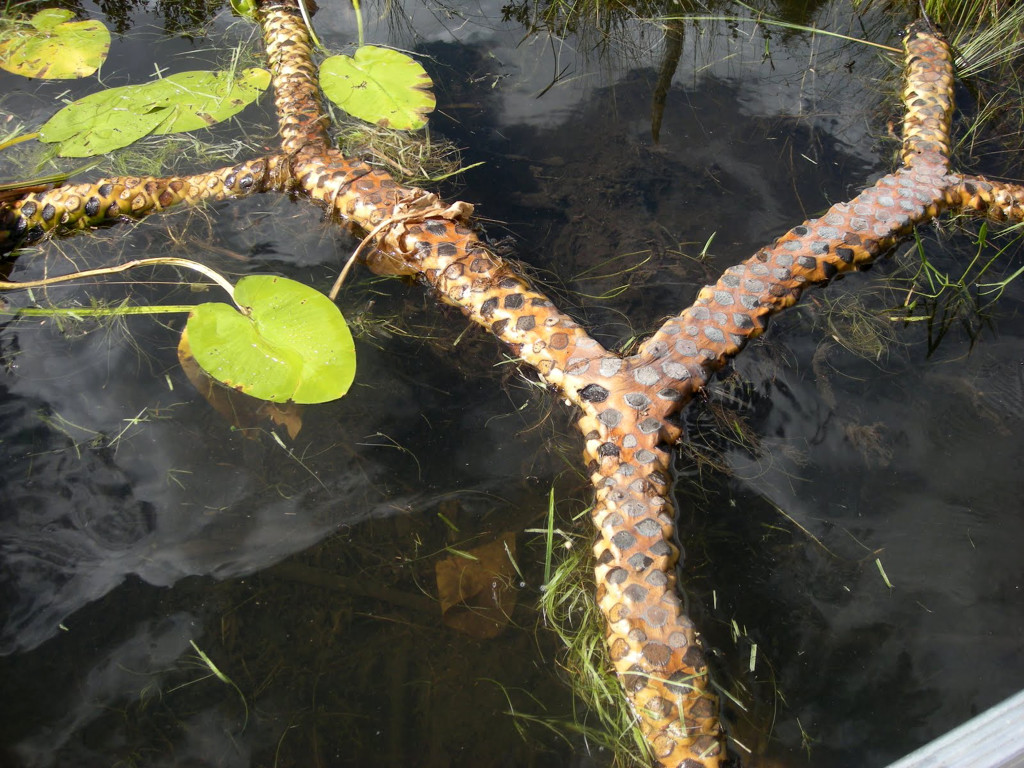
When and Where
Depending on region and spring climates, the crappie spawn generally begins when water temperatures reach 60 degrees. Warming water draws crappies from their open water main lake habitats towards shallow vegetated bays and marshes for spawning. Peak spawning occurs from 65 to 70 degrees. For me, this period quickly takes place between the last week of May through first week of June. Timing is everything.
Crappies will choose deeper water and thicker cover for spawning. Sometimes, the cover may be thicker than most anglers and their boats can penetrate through. The average depth crappies will spawn in is between 3 to 6 feet deep, but on many of the darkest waters and marshes I prowl, they can be in water as shallow as 1 foot. Males will be most frequently caught due to their aggression as nest builders, and as they await their courtship with females. Meanwhile, females will be present but in less abundance.
The habitat for uprooting crappies is entirely focused on lily pad systems and its complex root systems. These areas are always associated with shallow bogs, and marshland adjacent to the lake, and are textbook spots for the crappie set-up for the following reasons. First, the darker water and shallow habitats provide significantly warmer water temperatures that lead to a much faster, uninterrupted spawning period. Second, the higher fertility of these spots offers greater food sources for the abundant schools of fish. Third, these shallow jungles of thick cover are mostly inaccessible for the average boat, thus they are the perfect sanctuary from predators and anglers.
The best spots will stretch for several hundred yards, providing anglers with hours of casting and dipping through pockets, and repeated controlled drifts along the edges. Within these jungles of amazing habitat, fluctuating holes will be prevalent, as will be several nooks and crannies, underwater funnels and tunnels, and open pockets.
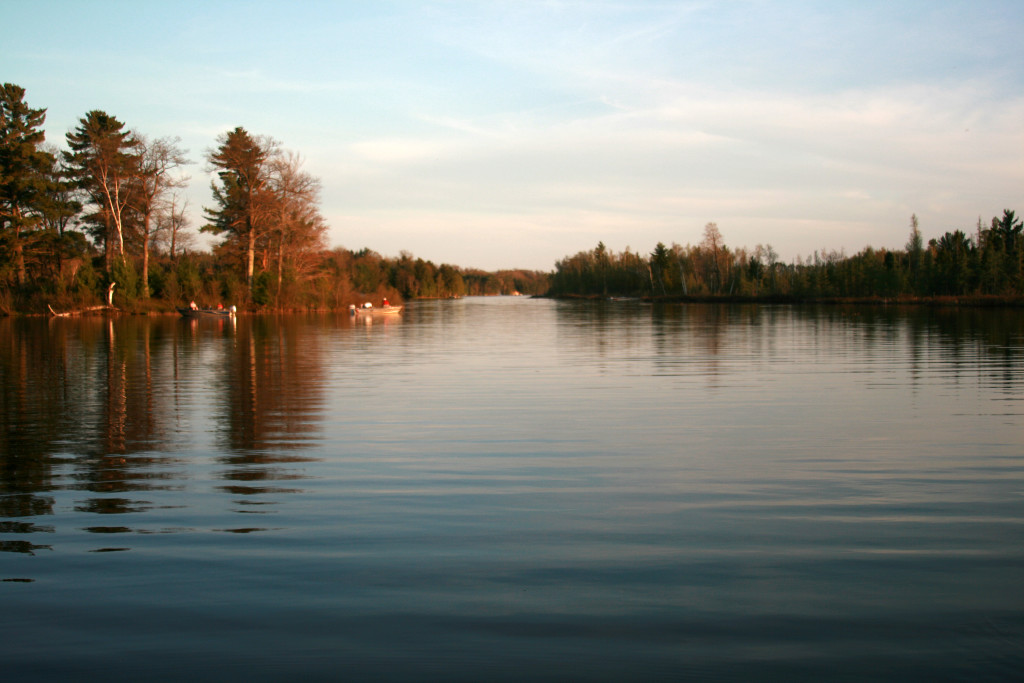
Crappie Safari
Over Memorial Day weekend in 2014, I went on my first crappie safari. On the warmest and first 80 degree, windless sunny day of the month, masses of crappies were infiltrating into the shallow backwaters and bogs of my favorite lake to spawn. To best approach these fish, we set up shop in my 16 foot Lund glass boat at the mouth of the backwater where a community of boats was stationed. Everyone was consistently catching, but my boat wanted more.
We slowly wandered our way into the bog with the trolling motor, raised high up into the water column to prevent the bottom from churning up, and migrating fish from spooking. Before us was a ½ mile distance of lily pad kingdoms to probe through. Of the dozen-plus boats concentrated in this large area, we were the only boat that was mobile and aggressive….. zig-zagging around those who were anchored and through all the dense lily pad root systems, out-fishing everyone at a ratio of 5-to-1.
Our timing and strategy on this day was about as perfect as fishing can get. The further and deeper into the mostly inaccessible bog we went, the more concentrated and abundant the crappies were. Of all the boats fishing near the mouth in community spots, nobody else was seeing this, nor could reach the fish like us. In a few hours, more than 50 keepers were caught. Most were 10 to 12 inch eaters. Some went into the box for a handful of meals, while several went back to propagate and complete their circle of life. During mass spawning runs like this, crappies like all other fish are non-renewable resources, thus it is encouraged to harvest conservatively by keeping only what is needed. A mess of 20 crappies will result in 5 to 10 meals for one single individual. More fisheries and quality size structures are destroyed during these periods than any other point in the season. Take the abundant 10 and 11 inch eaters, release all others.
In order to fish aggressively like we did, boat control and placement of baits far outweighed all of the varied techniques we used. Slowly pushing the boat with my bow-mount MinnKota Powerdrive V2 with the co-pilot remote, we were able to cruise at the slowest speeds (slower than foot pedal) that allowed us to use a combination of presentations that included drifting, dipping, and casting.
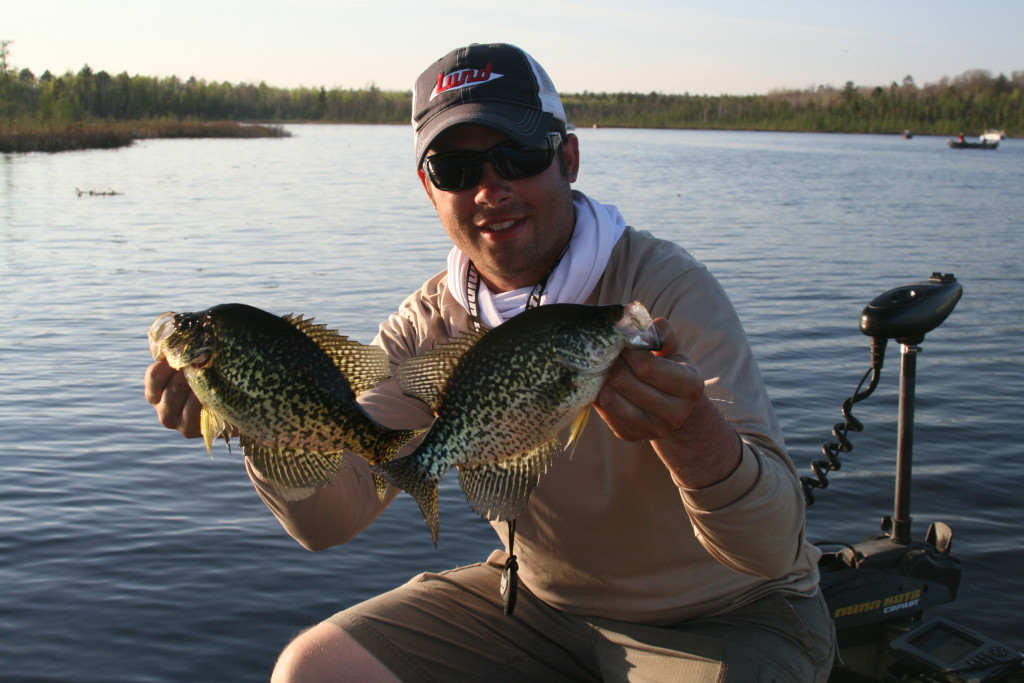
Tackle and Techniques
Pegged in my boat’s Scotty and Down-East rod holders, we each drifted one rod that was rigged with jig and swimming plastics, below a small slip float. Used in a planer board style manner rather than a strike indicator, our floats kept baits placed within 1ft underwater and trailing 25 yds away from the gunnels. Whenever a fish grabbed the crappie slider or micro twister tail, our indicator was the bend in the soft rod tip and exploding float. Best presented around large open pockets and along the edges of the root systems, this unusual stealthy drift fishing system led to numbers of crappies that didn’t get spooked by our nearby presence.
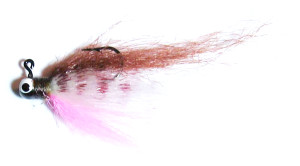 While drifting with the float system, dipping and casting as well as dead sticking the open pockets and canopies of bogs and roots kept us busy and entertained. With a combination of jigs and small plastics that included small Crappie USA tube jigs and 1” Polly Wogz grubs by Stankx Bait Co., crappies were extracted from cover. My favorite crappie jigs of late are hand tied hair jigs by my friend and In-Fisherman contributor, Jim Gronaw. Labeled under the name of “River Critter Hair Jigs,” they swim and flutter perfectly before the faces of crappies, and don’t require being tipped with small plastic trailers or any other extras.
While drifting with the float system, dipping and casting as well as dead sticking the open pockets and canopies of bogs and roots kept us busy and entertained. With a combination of jigs and small plastics that included small Crappie USA tube jigs and 1” Polly Wogz grubs by Stankx Bait Co., crappies were extracted from cover. My favorite crappie jigs of late are hand tied hair jigs by my friend and In-Fisherman contributor, Jim Gronaw. Labeled under the name of “River Critter Hair Jigs,” they swim and flutter perfectly before the faces of crappies, and don’t require being tipped with small plastic trailers or any other extras.
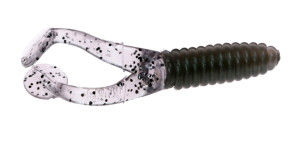
A new hot plastic we discovered came into play for us as well. A week prior, a television assignment on John Gillespie’s Wisconsin Waters and Woods program with friend and Wisconsin guide Rob Manthei, led to the discovery of the Crappie Scrub, made by Kalin’s. Dead sticking them on a 1/16 oz. jig beneath a float, some of the most remarkable, effortless and aggressive crappie bites I’ve ever witnessed took place. The crappie scrub with its kicker legs resembles a small frog in the hatchling stage. It’s the perfect bait for such shallow heavily vegetated habitat, one that most crappies have yet to ever see, and that’s not yet in the boats of many anglers.
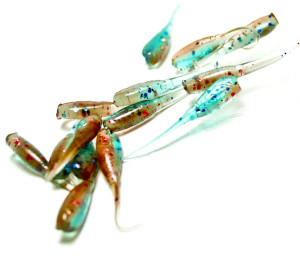 For such jungle fishing situations, live bait is never needed. Since the purpose is to keep mobile and cover water, weedless jigs and hooks also aren’t required because they can usually be retrieved from snags. Despite the need for a shallow boat and powerful trolling motor to get you there, the required tackle is fairly simple and minimal. 6 to 9 foot medium light action rods with 6 lb. copolymer or 2 to 4 lb. braided superline are excellent for all drifting, most dipping and casting scenarios. I know that if I had this option in my boat at the time, a 12 foot cane pole used for dipping (pole and line fishing) would have been a remarkable tool for even easier crappie extraction from thick cover. I’ll try to remember this for crappie safari 2015, as it does me no good to leave simple tools like this sitting in the garage.
For such jungle fishing situations, live bait is never needed. Since the purpose is to keep mobile and cover water, weedless jigs and hooks also aren’t required because they can usually be retrieved from snags. Despite the need for a shallow boat and powerful trolling motor to get you there, the required tackle is fairly simple and minimal. 6 to 9 foot medium light action rods with 6 lb. copolymer or 2 to 4 lb. braided superline are excellent for all drifting, most dipping and casting scenarios. I know that if I had this option in my boat at the time, a 12 foot cane pole used for dipping (pole and line fishing) would have been a remarkable tool for even easier crappie extraction from thick cover. I’ll try to remember this for crappie safari 2015, as it does me no good to leave simple tools like this sitting in the garage.
Conclusion
To gain entry into the expansive kingdom of lily pads and their complex infrastructure, having the right watercraft and a quiet trolling motor will allow for this unique fishing adventure to happen. Location and coverage, and quality of drifts will dictate all the fish catching success. Always remember that the most impenetrable roots and fields of lily pads are generally the best. It’s the reason why majority of northern crappie anglers aren’t yet doing it.
